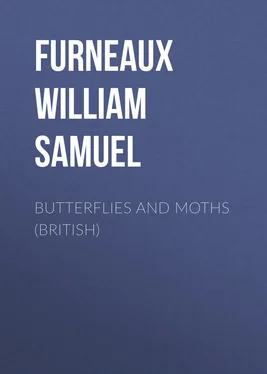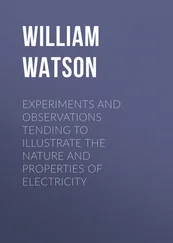William Furneaux - Butterflies and Moths (British)
Здесь есть возможность читать онлайн «William Furneaux - Butterflies and Moths (British)» — ознакомительный отрывок электронной книги совершенно бесплатно, а после прочтения отрывка купить полную версию. В некоторых случаях можно слушать аудио, скачать через торрент в формате fb2 и присутствует краткое содержание. Жанр: Природа и животные, foreign_antique, foreign_prose, на английском языке. Описание произведения, (предисловие) а так же отзывы посетителей доступны на портале библиотеки ЛибКат.
- Название:Butterflies and Moths (British)
- Автор:
- Жанр:
- Год:неизвестен
- ISBN:нет данных
- Рейтинг книги:5 / 5. Голосов: 1
-
Избранное:Добавить в избранное
- Отзывы:
-
Ваша оценка:
- 100
- 1
- 2
- 3
- 4
- 5
Butterflies and Moths (British): краткое содержание, описание и аннотация
Предлагаем к чтению аннотацию, описание, краткое содержание или предисловие (зависит от того, что написал сам автор книги «Butterflies and Moths (British)»). Если вы не нашли необходимую информацию о книге — напишите в комментариях, мы постараемся отыскать её.
Butterflies and Moths (British) — читать онлайн ознакомительный отрывок
Ниже представлен текст книги, разбитый по страницам. Система сохранения места последней прочитанной страницы, позволяет с удобством читать онлайн бесплатно книгу «Butterflies and Moths (British)», без необходимости каждый раз заново искать на чём Вы остановились. Поставьте закладку, и сможете в любой момент перейти на страницу, на которой закончили чтение.
Интервал:
Закладка:
While speaking of the senses of insects, I cannot refrain from mentioning a most remarkable example of a peculiar sensitiveness that has been observed in certain moths of the family Bombyces ( page 217 Конец ознакомительного фрагмента. Текст предоставлен ООО «ЛитРес». Прочитайте эту книгу целиком, купив полную легальную версию на ЛитРес. Безопасно оплатить книгу можно банковской картой Visa, MasterCard, Maestro, со счета мобильного телефона, с платежного терминала, в салоне МТС или Связной, через PayPal, WebMoney, Яндекс.Деньги, QIWI Кошелек, бонусными картами или другим удобным Вам способом.
) – notably the Oak Eggar, the Emperor, and the Kentish Glory. Take a newly emerged female of either of these species, shut her up in a small box, conceal the box in your pocket, and then walk about in some country spot known to you as being one of the haunts of that species of moth. Then, if any of the males of the same species happen to be in the neighbourhood, they will settle or hover about close to the female which, although still concealed and quite out of their reach, has attracted them to the spot.
What a marvellously acute sense this must be, that thus enables the insects to scent out, as it were, their mates at considerable distances, even when doubly surrounded by a wooden box and the material of a coat pocket! You would naturally expect that entomologists have turned this wonderful power to account. Many a box has been filled with the beautiful Kentish Glories of the male kind, who had been led into the snare by the attractions of a virgin Glory that they were never to behold. Many an Emperor has also been decoyed from his throne to the place of his execution, beguiled by the imaginary charms of an Empress on whom he was never to cast one passing glance. And these and other similar captures have been made in places where, without the employment of the innocent enchantress, perhaps not a single male could have been found, even after the most diligent search.
Speaking of this surprising sense, I am again tempted to revert to the antennæ; for it is a remarkable fact that the males of those species of moths which exhibit the power of thus searching out their mates, are just those that are also remarkable for their very broad and deeply pectinated antennæ – a fact that has led to the supposition that the power in question is located in the antennæ, and is also proportional to the amount of surface displayed by these organs.
Up to the present time we have been considering the butterfly and moth in their perfect forms, but everybody knows that the former is not always a butterfly, nor is the latter always a moth; but that they both pass through certain preparatory stages before they attain their final winged state.
We shall now notice briefly what these earlier stages are, leaving the detailed descriptions of each for the following chapters.
The life of the perfect butterfly or moth is of very short duration, often only a few days, nearly the whole of its existence having been spent in preparing itself for the brief term to be enjoyed
… in fields of light,
And where the flowers of Paradise unfold.
It may be interesting to consider of what use the metamorphoses of insects are, and to what extent these metamorphoses render them fit for the work they have to do.
It is certain that the chief work of insects, taken as a whole, is to remove from the earth the excess of animal and vegetable matter. If they are to do this work effectually, it is clear that they must be very voracious feeders, and also be capable of multiplying their species prodigiously. Now each of these powers requires the special development of a certain set of organs, and an abnormal development of one set must necessarily be produced at the expense of the other. Hence we find insects existing in two distinct stages, with or without an intermediate quiescent state, during the first of which the digestive apparatus is enormously developed, while the reproductive organs occupy but very little space; then, during the other stage, the digestive apparatus is of the simplest possible description, and the organs of reproduction are in a perfect state of development.
Allowing, then, that the chief work of the insect is the removal of surplus organic matter, we can see that a large share of its life should be spent in the larval or grub stage, and that the perfect state need not occupy any more time than is necessary for the fertilisation of the eggs that almost completely fill the body of the female at the time of her emergence from the chrysalis shell.
Many insects undergo their metamorphoses by slow degrees, but the Lepidoptera , after existing for some considerable period without any important visible change in structure, pass by a rapid transition into the next state. Thus, a caterpillar, that has not altered in general form for several weeks, changes into a chrysalis within the course of a few days; and again, after a period of quiescence that may extend throughout the whole of the colder months, becomes a perfect butterfly or moth within twenty minutes of the moment of its emergence.
But this suddenness is more apparent than real, as may easily be proved by internal examinations of the insect at various stages of growth; showing that we are led astray by the rapidity of external changes – the mere moultings or castings of the skin – while the gradual transformations proceeding within are not so readily observed.
We have already said that the life of the perfect butterfly or moth is short. A few days after emergence from the chrysalis case, the female deposits her eggs on the leaves or stems of the plant that is to sustain the larvæ. Her work is now accomplished, and the few days more allowed her are spent in frolicking among the flowers, and sucking the sweet juices they provide. But males and females alike – bedecked with the most gorgeous colours and overflowing with sportive mirth when first they take to the wing – soon show the symptoms of a fast approaching end. Their colours begin to fade, and the beauty-making scales of the wings gradually disappear through friction against the petals of hundreds of flowers visited and the merry dances with scores and scores of playful companions. At last, one bright afternoon, while the sun is still high in the heavens, a butterfly, more weary than usual, with heavy and laborious flight, seeks a place of rest for the approaching night. Here, on a waving stalk, it is soon lulled to sleep by a gentle breeze.
Next morning, a few hours before noon, the blazing sun calls it out for its usual frolics. But its body now seems too heavy to be supported by the feeble and ragged wings, and, after one or two weak attempts at play, incited by the approach of a younger and merrier companion, it settles down in its final resting place. On the following morning a dead butterfly is seen, still clinging by its claws to a swinging stem, from which it is eventually thrown during a storm.
The tale of the perfect moth is very similar to the above, except that it is generally summoned to activity by the approach of darkness.
We see, then, that butterflies and moths exhibit none of that quality which we term parental affection. Their duty ends with the deposition of the eggs, and the parents are dead before the young larvæ have penetrated the shell that surrounds them.
Yet it is wonderful to see how unmistakably the females generally lay their eggs on the very plants that provide the necessary food for their progeny, as if they were not only conscious of and careful concerning the exact requirements of their offspring, but also possessed such a knowledge of botanical science as enabled them to discriminate between the plant required and all others.
Читать дальшеИнтервал:
Закладка:
Похожие книги на «Butterflies and Moths (British)»
Представляем Вашему вниманию похожие книги на «Butterflies and Moths (British)» списком для выбора. Мы отобрали схожую по названию и смыслу литературу в надежде предоставить читателям больше вариантов отыскать новые, интересные, ещё непрочитанные произведения.
Обсуждение, отзывы о книге «Butterflies and Moths (British)» и просто собственные мнения читателей. Оставьте ваши комментарии, напишите, что Вы думаете о произведении, его смысле или главных героях. Укажите что конкретно понравилось, а что нет, и почему Вы так считаете.












